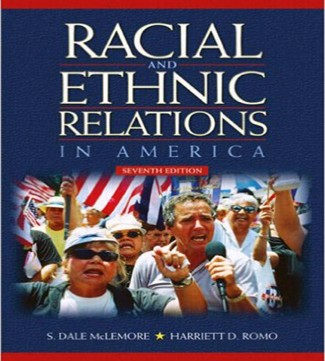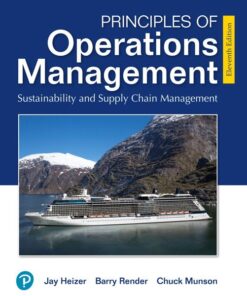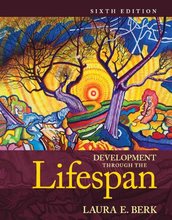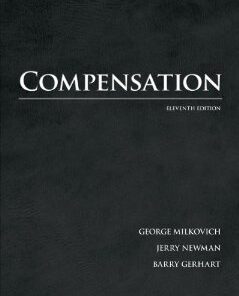Racial and Ethnic Relations in America 7th Edition McLemore Romo Test Bank
$35.00
Racial and Ethnic Relations in America 7th Edition McLemore Romo Test Bank
978-0205381975
Contents
Chapter 1 Natives and Newcomers 1
Chapter 2 Together or Apart? Some Competing Views 9
Chapter 3 The Rise of Anglo American Society 17
Chapter 4 The Golden Door 25
Chapter 5 Nativism and Racism 33
Chapter 6 African Americans: From Slavery to Segregation 41
Chapter 7 African Americans: Protest and Social Change 49
Chapter 8 Mexican Americans: From Colonized Minority
to Political Activists 57
Chapter 9 Puerto Ricans and Mexican Americans:
Identity and Incorporation 65
Chapter 10 Native Americans: The First Americans 73
Chapter 11 The Japanese Experience 81
Chapter 12 Chinese, Asian Indian, Korean, Vietnamese,
Filipino, and Middle Eastern Arab Americans 89
Chapter 13 Vietnamese Americans, Arab Americans,
and Resurgent Racism 96
Chapter 14 The Future of Ethnicity 104
Chapter 1 Natives and Newcomers
Multiple Choice Questions
1) Which group can claim to have been in America for more than five centuries?
A) Native Americans B) English
C) Black slaves D) Spanish
Answer: C
Page Ref: 2
2) When sociologists focus on a group’s cultural traits and heritage they are concerned with:
A) race. B) ethnicity.
C) marital assimilation. D) secondary assimilation.
Answer: B
Page Ref: 2
3) For the most part, many in America believe that there is one single course to assimilation.
Today, this notion:
A) stands unchallenged.
B) has been supported in spite of numerous challenges.
C) has been true for all newcomers to America.
D) is believed to be false based on the evidence.
Answer: D
Page Ref: 3
4) Generally speaking, which generation of immigrants may move more completely into the
mainstream of American society?
A) first generation B) second generation
C) third generation D) fourth generation
Answer: C
Page Ref: 4
5) All of the following are factors relating to assimilation or straight-line theory, except:
A) highly controversial
B) assumes that most look backwards not forward
C) assumes that each generation reaches higher social and economic standards
D) assumes that the longer a group has been in America, the more successful they become
Answer: B
Page Ref: 4-5
1
6) The three generations description applied to which of the following?
A) second immigration English B) Native Americans
C) Mexican Americans D) Black slaves
Answer: A
Page Ref: 5-6
7) The most powerful group in a society is called the ________ group.
A) minority B) subordinate C) all powerful D) majority
Answer: D
Page Ref: 7
8) “It is absolutely essential that we study the ________ ________ that have created the
dominant-subordinate group relations of interest to us.”
A) minority sequences B) historical sequences
C) ethnic patterns D) racial patterns
Answer: B
Page Ref: 7
9) Which group is more likely to follow the three generations process?
A) voluntary immigrants B) involuntary immigrants
C) conquered groups D) slaves
Answer: A
Page Ref: 7
10) All of the following factors affect assimilation except:
A) voluntary or involuntary immigration. B) ethnic and racial similarity.
C) love of one’s homeland. D) differences in social power.
Answer: C
Page Ref: 6-8
11) Robert E. Park’s theory called the cycle of race relations had four processes or stages. All of the
following belong to those stages, except:
A) uniformity. B) contact.
C) competition. D) accommodation.
Answer: A
Page Ref: 8-9
12) Which researcher studied the Irish in his contribution to the theory of assimilation?
A) Park B) Gordon C) Hansen D) Handlin
Answer: D
Page Ref: 9
2
13) Which of the following researchers discussed the issue of subsocieties and subcultures in
assimilation?
A) Park B) Gordon C) Hansen D) Handlin
Answer: B
Page Ref: 9-10
14) Ethnic identities combined with networks with co-ethnics of the same social class form a
subsociety called:
A) underclass. B) underethnics.
C) immigrant class. D) ethclasses.
Answer: D
Page Ref: 10
15) Ethnogenesis is argued to involve ________ negotiation among various racial and ethnic
groups and the dominant group.
A) segmented B) continual
C) exclusively formal D) exclusively informal
Answer: B
Page Ref: 10
16) Of all the assimilation researchers mentioned in this text, the authors chose to focus most on
the works of:
A) Park. B) Gordon. C) Hansen. D) Handlin.
Answer: B
Page Ref: 11
17) The boundaries between and within racial and ethnic groups are:
A) sharp and fixed. B) dull and in flux.
C) not sharp and fixed. D) not dull and in flux.
Answer: C
Page Ref: 11
18) The most frequently chosen racial trait that is not very useful in distinguishing between the
races is:
A) hair. B) face.
C) body shape and size. D) skin.
Answer: D
Page Ref: 12












Reviews
There are no reviews yet.